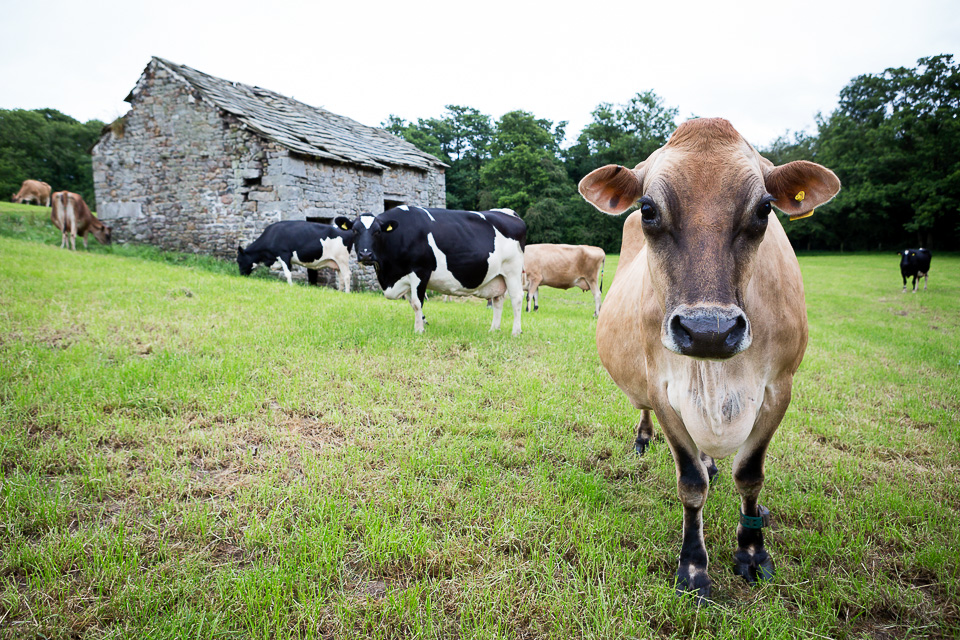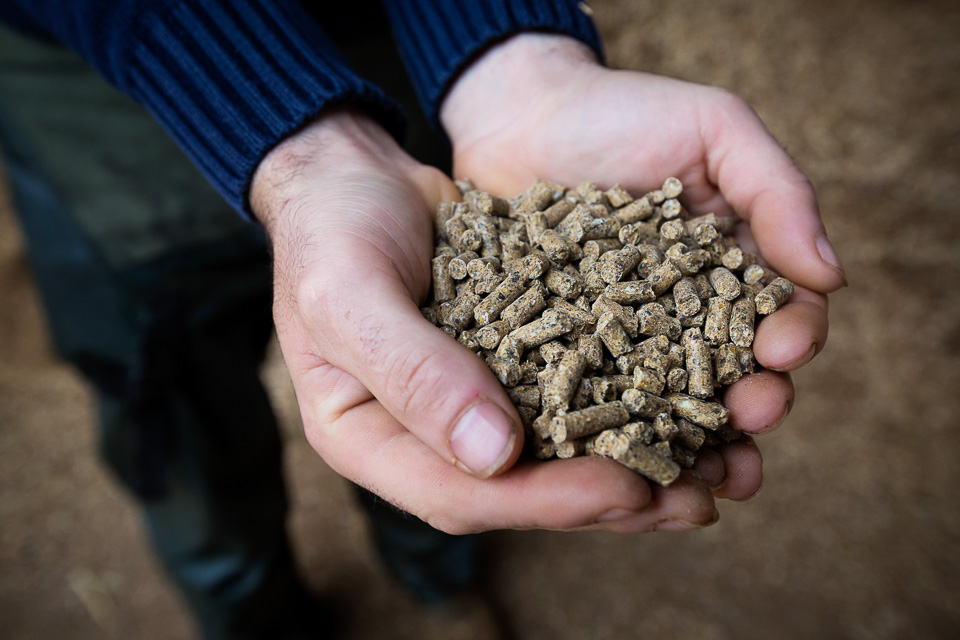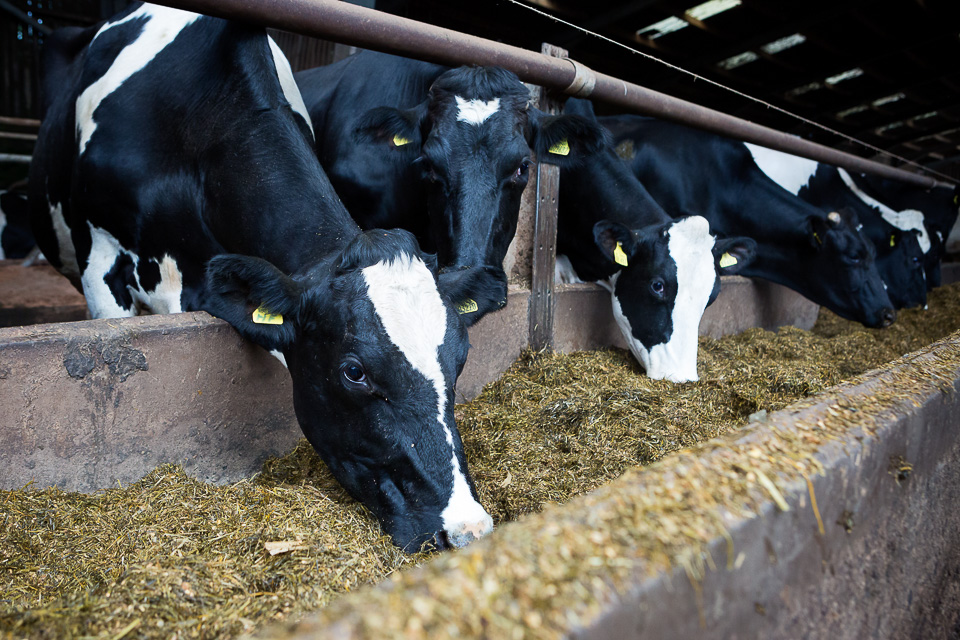17 March 2022 | Climate Tech
Methane ‘Mootral’ cows
By
If you asked a random person on the street what comes to mind when they think of climate change, it’s quite possible that their mind might wander off and land in a grassy pasture somewhere, dotted with cows happily chewing grass 🐄. For whatever reason, likely in no small part because it’s a bit funny, the fact that cows literally burp methane gas which ends up in the atmosphere has become a resonant ‘fun’ fact people call to mind when they think of atmospheric greenhouse gasses (“GHGs”) and global warming.
Nor is this a negligible climate challenge. Methane gas, while less prevalent than carbon dioxide, has ~85x the warming potential over a twenty year timespan. And cows really do contribute a lot of methane to the atmosphere; in countries like the U.S. with a lot of agriculture, cows are the top source of methane emissions.
What’s the solution? Eating less red meat? If a cow were writing this (?!) they’d say yes.

While that can be an impactful way to cut your individual carbon emissions and save cows, tackling the methane challenge at scale won’t be that easy. Especially with a burgeoning global population that needs to be fed, it’s unlikely that the world can engineer and shift consumer preferences away from the beef and dairy industries all that quickly.
Enter Mootral (pronounced like carbon ‘neutral’). Mootral produces a natural feed supplement (also named Mootral) that reduces methane emissions from cows when added to their diet.
In case you still think cow burps are all fun and games, we’ll lead with the fact that Mootral’s ruminant livestock solution is a potential gigaton level CO2e reduction solution.
How? Let’s explore 👇
Methane emissions, meet your match
The Mootral story actually starts with another massive challenge. Mootral’s co-founders, Thomas Hafner, Isabelle Botticelli, and Chris Kantrowitz, had a strong interest and concern in Antimicrobial Resistance (AMR), which, much like climate change, they believe will have dire consequences for humanity sooner than most people think.
While that challenge involved lots of thinking about human antimicrobial resistance, it also led them to livestock. ~70% of all antibiotics used in the U.S. are used to treat animals.
When they started studying cows however, they realized that the same type of thinking they were doing in AMR could yield solutions for challenges posed by ruminant livestock. Ruminant livestock, e.g. cows, emit vast amounts of methane, which is a particularly ‘hot’ greenhouse gas.
Mootral wanted to build a business that allows farmers to continue supplying protein from livestock in a more sustainable way. Why focus on farmers? In climate circles, ag and farmers get a bad rap. For one, folks like myself tend to abstract entire sectors as as a source of a certain percentage of emissions. This separates our perception from one the ground reality.
As a result, we start to lose sight of what we’re asking of people like farmers sometimes. We task them with producing food for us, demand more of it every year, and then chastise them for farming how they always have without giving them incentives to change their ways. Nor have other industries and governments exactly taken a leadership role.
Further still, consumers want happy cows with room to roam, but don’t want to pay the price tag associated with that. In short, we all want to have our beef and eat it too.
Which is why Mootral is a big advocate for farmers, too. Here’s how Eileen Rüter, Commercial and Business Development Director at Mootral, described their position:
…we really want to ensure that farmers are not seen as the villain in the climate conversation. They’re heroes; they’re the ones that give us the food, they’re working 24/7, they can’t easily go on vacation, etc…”
Mootral – the path to carbon neutral
Mootral’s methane emissions tackling product is a pellet that’s added to cow’s diets in small amounts. By small, we’re talking really small: around 20-25 grams per day. When ingested by the cow, the formulation of the pellet helps the cow emit less methane, while also benefiting it in terms of ‘performance’ (e.g. milk yields).

The key ingredients aren’t complicated – Mootral’s supplement is primarily garlic and citrus extracts 🍋. For the real chemistry buffs out there (hi, Dad), the active compounds are Allicin, which is prevalent in garlic, and bioflavonoids from citrus.
Maybe you’re already a garlic and citrus fan like I am. As it turns out, these ingredients are amazing for cows too. Within the cows’ digestive tract, they act as methanogen inhibitors. Methanogens are prevalent in the rumen (the first stomach compartment of ruminants, which helps animals like cows digest grass) and produce methane as a by-product of normal digestion processes. Citrus and garlic thus reduce the amount of methane that the cow produces. Importantly, all this happens without harming the cow’s overall digestion.

Looking for the hard hitting stats on the actual methane emissions reductions? Here’s the example Eileen offered:
[At Brades Farm] there are two breeds. They have very typical black and white Holstein Friesian cows. And they have Jersey cows, which are a bit smaller, and produce a fattier and richer milk. We measured two different reduction factors in the two cows; the jerseys saw 38% methane emission reductions, which is on the higher end. The other cows saw around a 20% reduction.
At Brades Farm, this works out to about a ton of methane emissions reductions per year, per cow. If you have a herd of hundreds of cows, you’re talking hundreds of tonnes. And since we’re talking about methane emissions, we’re also talking about a gas that has ~30x the lifetime Global warming potential of CO2 over 100 years. So a single farm can suddenly become a site of four to five digit tonnes of CO2e reductions annually. The world’s biggest farms could hit six to seven figures with 50,000+ cows.
There are 1.5B cows in the world total? One for every five humans. You wouldn’t need to feed all of them Mootral to approach a potential gigaton level solution, especially if and when Mootral’s product improves in terms of methane reductions and if global herd sizes grow.
The thousand foot view here is that Mootral is a) easy for farmers to add to cows’ diets and it b) can help with emissions reductions in a big way.
Finding a flywheel
At present, Mootral sells their product directly to farmers. They have a handful of initial flagship farm clients, like Brades Farm we mentioned previously in the UK, that has all of their milking cows on the Mootral diet. Mootral is also in talks with large beef and dairy companies who want to reduce their carbon footprint in their supply chain. Those companies could help incentivize farmers to reduce methane emissions by using products such as Mootral.
The product itself costs roughly 0.16 to 0.20 euros per cow, per day. For a herd of hundreds of cows, that can add up over the course of weeks and months, especially for farmers operating on slim margins in industries like dairy that have struggled considerably of late. Nor is it necessarily easy to convince industrial scale farming options to make changes in their processes, even if they’re as easy to integrate as Mootral’s.
As a result it’s in Mootral’s interest to lessen the onus on farmers in their business model. How? One path runs through the burgeoning voluntary carbon offset market. Mootral already has offsets listed in Verra’s registry. Mootral produces quantifiable reductions in methane gas emissions with few lingering questions about permanence. Further, the emissions reductions are local to areas in the EU where major Fortune 500s operate. Buying local carbon assets is increasingly attractive to these companies. All of this means Mootral’s ‘carbon’ offsets trade at a premium to other products on the market (up to ~$75 EUR as of this writing).
The astute reader will have paused by now and asked, “Hey, aren’t these methane gas emissions reductions? Why are we talking about carbon here?”
That’s actually one of the main challenges for what should really be called Mootral’s methane offsets. The leading measure for warming potential, fittingly named Global warming potential, has been around since 1989 and standardizes the atmospheric warming potential of different greenhouse gasses with carbon as the reference point. In short, it turns everything into a neat CO2 equivalent (“CO2e”) number.
This has been the subject of a lot of debate and policy oscillation. Since its inception actually; back in 1989 scientists protested, saying the task of devising the right framework was impossible. One key question is what the timespan of warming in question should be. The ‘half-life’ of methane in the atmosphere is much shorter than that of carbon. As such, the amount of time over which warming potential is measured impacts its conversion rate significantly? Are we optimizing to decelerate global warming immediately? Or over the long haul?
That’s the exact question a new study in Environmental Research Letters recently posed. It identified significant underestimation of the impact of methane emissions. If policymakers focused on the next two decades alone, perhaps a much higher conversion factor for methane to carbon emissions calcs would be warranted. Mootral could ‘generate’ a lot more carbon offsets if the conversion factor were 2-3x higher conversion.
Regardless of regulatory developments, even at a conversion factor of ~30x, the carbon offset market will be big for Mootral. One could even go so far as to imagine a world in which:
- Farmers are gifted the product
- Mootral earns their revenue from selling carbon offsets
- They kickback a percentage of profits to the farmers that use their product
- Re-start at #1, this time with added financial incentive
That may be a lofty vision, but with a sufficiently robust pipeline of interested farmers who are willing to integrate Mootral in their operations, it’s possible.
Series A and scale
Apart from endowing the business with $25m of their own money, Mootral’s founders have raised $10m+ from investors, including Lowercarbon Capital, Kindred Ventures and Earthshot Ventures, to commercialize and scale. Now, they’re prepping for their Series A.
This will be key to hire, scale, and promote R&D to develop even more effective formulations of Mootral (e.g. to reduce methane emissions in cows by even more than 20-30%). R&D also won’t be confined to the Mootral product; the company is already not a single product company. Their other product helps to reduce antibiotic resistance in livestock. And while scant on details, Eileen suggested there’ll be an even larger range of products tackling unique challenges in the future.
Ideally Mootral gets good help on the policy front and (hopefully) more regulatory tailwinds in the EU and beyond. Further, consumer level support is also critical. I could imagine a future in which you and I insist on only buying beef that was fed Mootral. I could get behind that.
Most importantly, the potential impact of Mootral at scale approaches the gigaton level. While it can’t cut methane emissions from things like China’s coal power sector (up to 20% of all global methane emissions), it can do more than most other single technologies. Methane is arguably the lowest hanging fruit because of its massive warming potential. Reducing methane emissions is a massive opportunity to decelerate global warming.
If cows can be just as happy munching on Mootral, then that can help buy time to eliminate the myriad more entrenched emissions elsewhere across supply chains and the world. We’re excited to follow their journey.
All images used with permission from Mootral